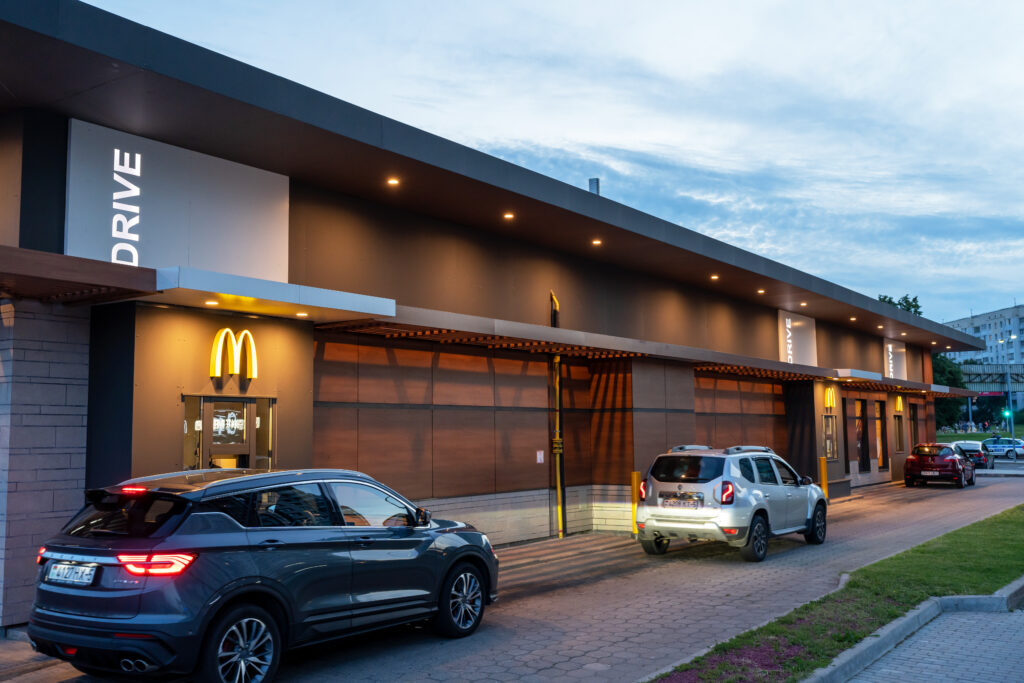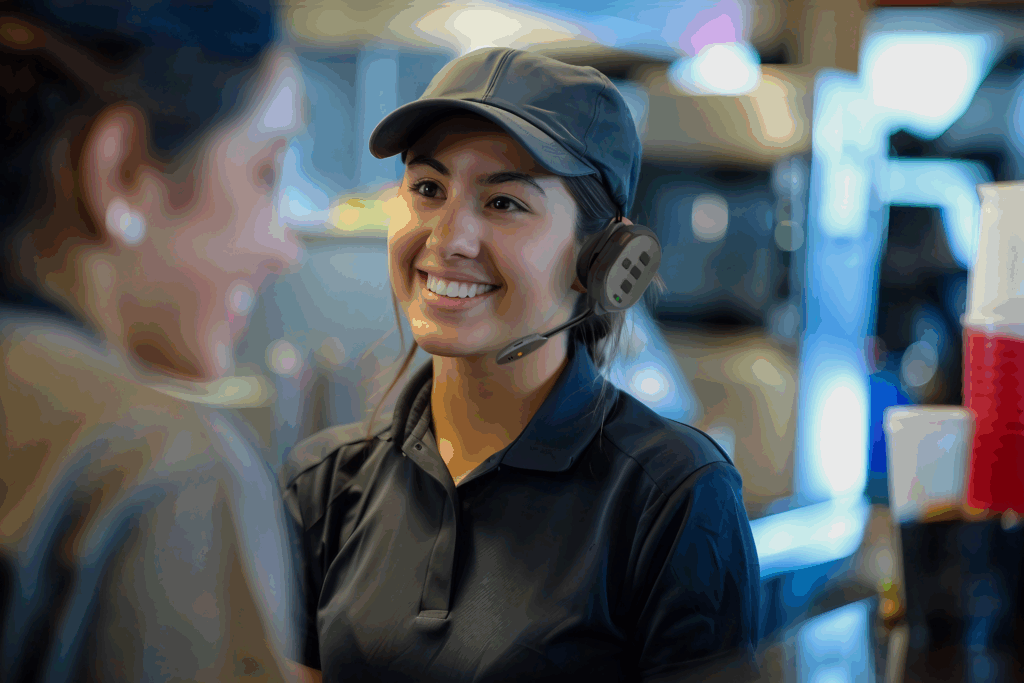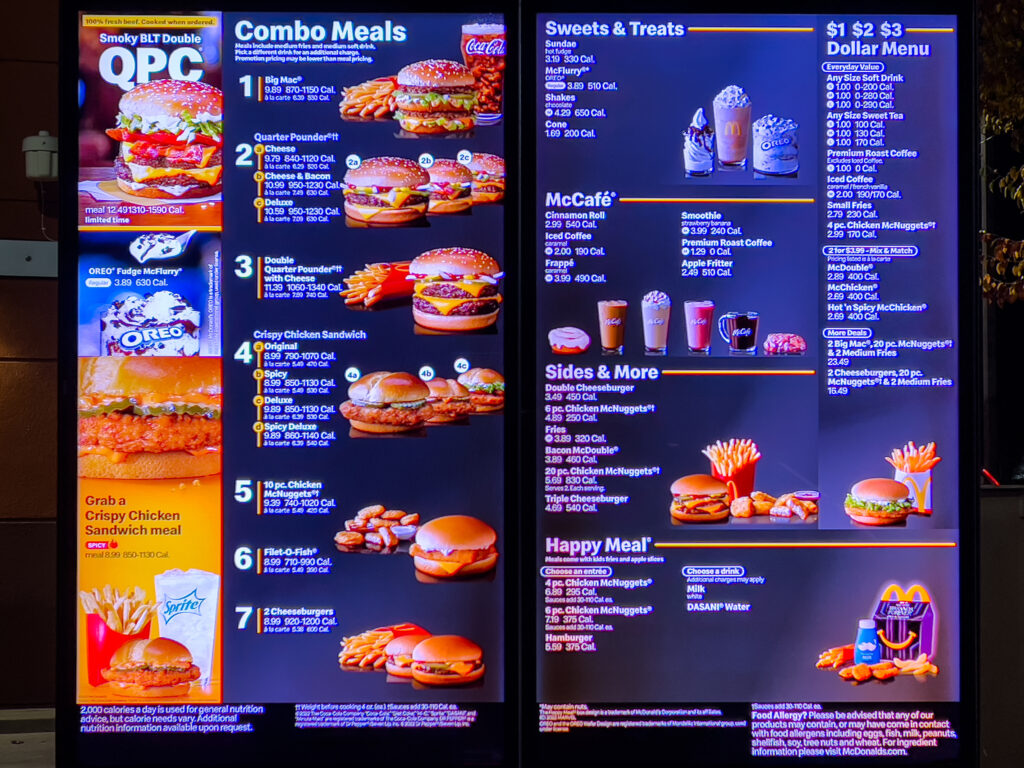In the contemporary dining landscape, drive-thru service has become synonymous with convenience, offering customers quick and efficient meals on the go. However, in an era where time is of the essence, maintaining a swift speed-of-service (“SOS”) has emerged as a critical factor for success in the fast-food industry. In this blog post, we’ll explore the significance of prioritizing efficiency in drive-thru operations and delve into the role of technology in achieving and sustaining optimal speed-of-service while ensuring a high-quality dining experience.
The Importance of Speed-of-Service
- Customer Satisfaction: Swift service is fundamental for ensuring customer satisfaction in the drive-thru sector. Lengthy wait times can lead to dissatisfaction and drive customers away, while fast service fosters a positive experience, fostering loyalty and repeat patronage.
- Operational Efficiency: A streamlined drive-thru process not only enhances customer satisfaction but also boosts operational efficiency. Faster service means more orders can be processed in less time, maximizing revenue potential and profitability for the restaurant.
- Competitive Edge: In a fiercely competitive market, offering faster service than competitors can provide a significant competitive advantage. It becomes a pivotal differentiator that attracts customers seeking convenience and promptness.
- Reputation Management: Slow service can adversely affect a restaurant’s reputation, particularly in the age of social media where dissatisfied customers are quick to share their experiences online. Maintaining an exceptional speed-of-service helps preserve a positive brand image and mitigate negative reviews.
How Does Speed-of-Service Impact Guests in the Drive-Thru and the Restaurant?
SOS significantly impacts customers both in the drive-thru and within the restaurant premises. In the drive-thru, faster service translates to reduced wait times, allowing customers to quickly and conveniently obtain their orders without experiencing frustration or impatience. Efficient SOS in the drive-thru also enables customers to seamlessly integrate dining into their busy schedules, enhancing their overall dining experience. Inside the restaurant, prompt service ensures that customers receive their meals in a timely manner, contributing to a positive dining atmosphere and preventing overcrowding or congestion. Moreover, swift SOS fosters customer satisfaction and loyalty, as patrons are more likely to return to establishments where their time is valued and where they can enjoy a hassle-free dining experience. Therefore, maintaining a great speed-of-service is essential for meeting customer expectations and maximizing satisfaction both in the drive-thru and within the restaurant.
Solutions to Enhance Speed-of-Service
- Technology Integration: Embracing technology is instrumental in revolutionizing the drive-thru experience. Implementing digital menu boards, mobile ordering apps, and self-service kiosks can expedite the ordering process, minimize errors, and enhance overall efficiency.
- Predictive Analytics: Leveraging data analytics to forecast peak hours and adjusting staffing levels accordingly can prevent congestion during busy periods. Cross-training employees to perform multiple tasks ensures adaptability and seamless operations during high-demand times.
- Streamlined Menu Offerings: Simplifying the menu by focusing on popular items and eliminating slow-moving or intricate dishes can accelerate order preparation and reduce wait times. A concise menu also facilitates quicker decision-making for customers, further enhancing SOS.
- Dedicated Order Management: Assigning dedicated personnel to manage orders exclusively can expedite the drive-thru queue. These employees should be trained to efficiently interact with customers, suggest additional items, and ensure order accuracy.
- Automated Systems: Implementing automated systems for order processing and payment handling can streamline operations and reduce human error. Automated order confirmation and payment processing contribute to faster service and improved efficiency.
In the fast-food industry, prioritizing speed-of-service is essential for meeting evolving customer expectations and maintaining a competitive edge. By embracing technology, implementing innovative solutions, and optimizing operational processes, drive-thru restaurants can enhance efficiency, deliver exceptional service, and foster customer loyalty. By continually striving for excellence in speed-of-service, establishments can not only meet but exceed customer demands, driving sustained growth and success in the dynamic food service landscape.
- The successful integration of indoor and outdoor LED digital menu boards and mobile ordering apps, resulting in significant reductions in wait times and enhanced customer satisfaction.
- Deploying predictive analytics to anticipate peak hours and optimize staffing levels can help to ensure efficient operations during busy periods.
- The utilization of self-service kiosks allows customers to place orders independently and reducing dependency on traditional order-taking methods.



